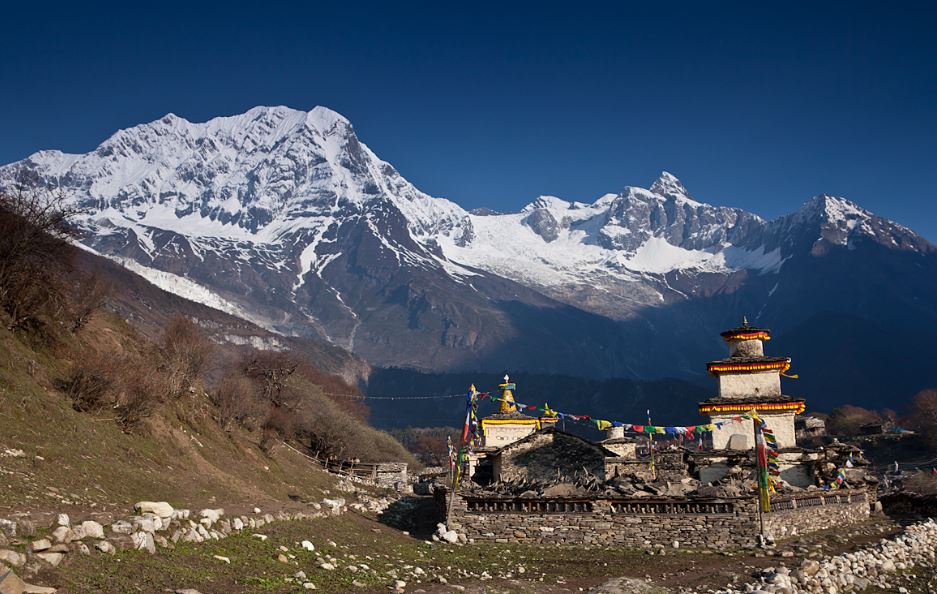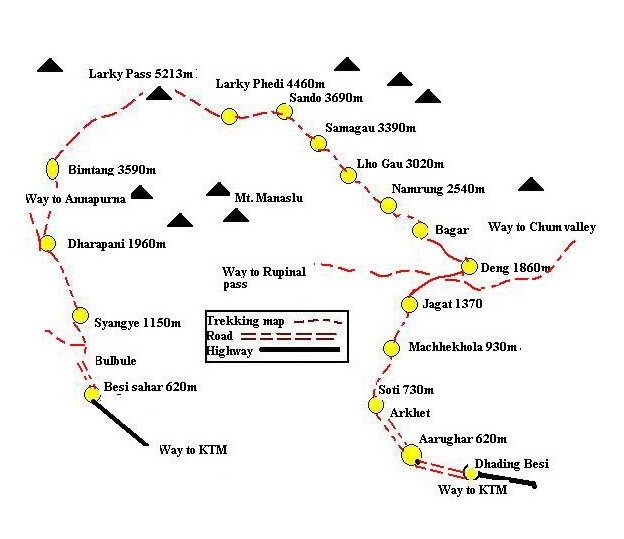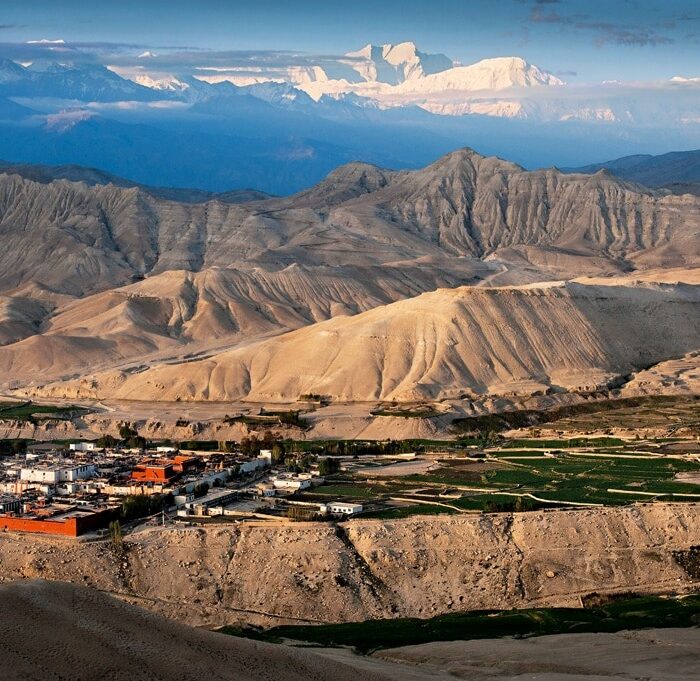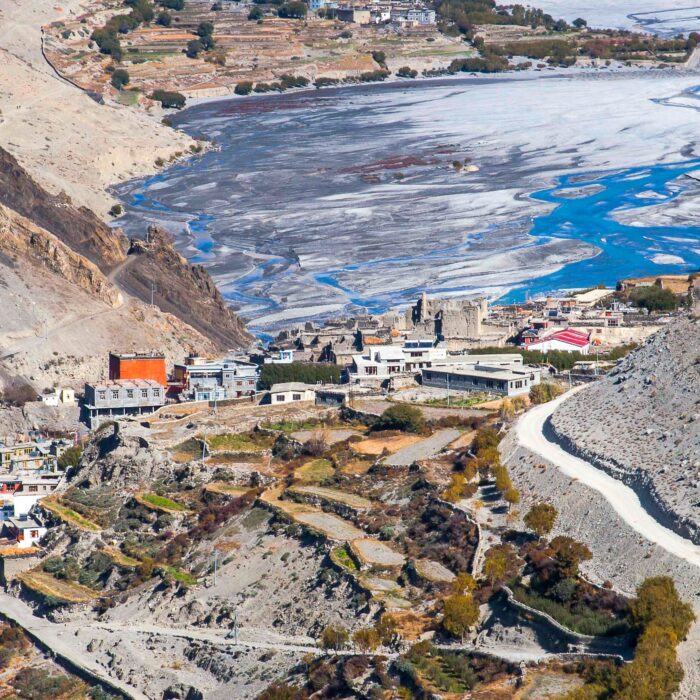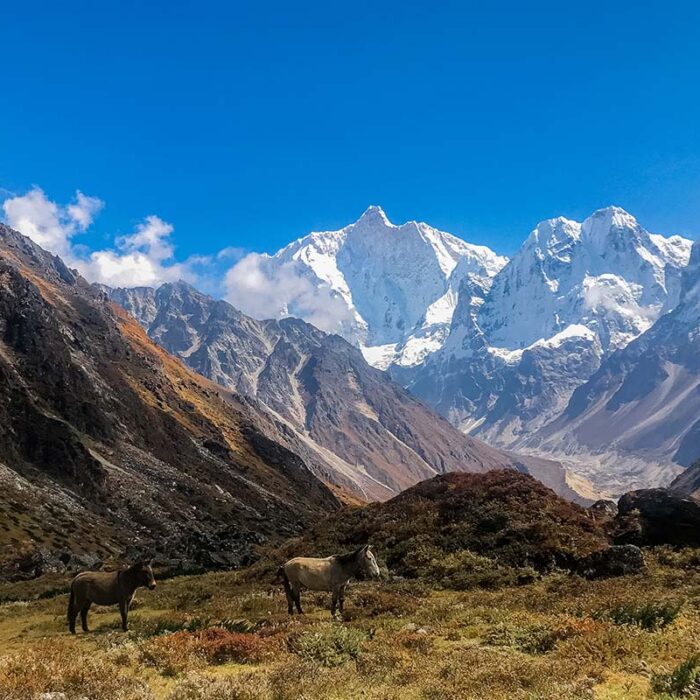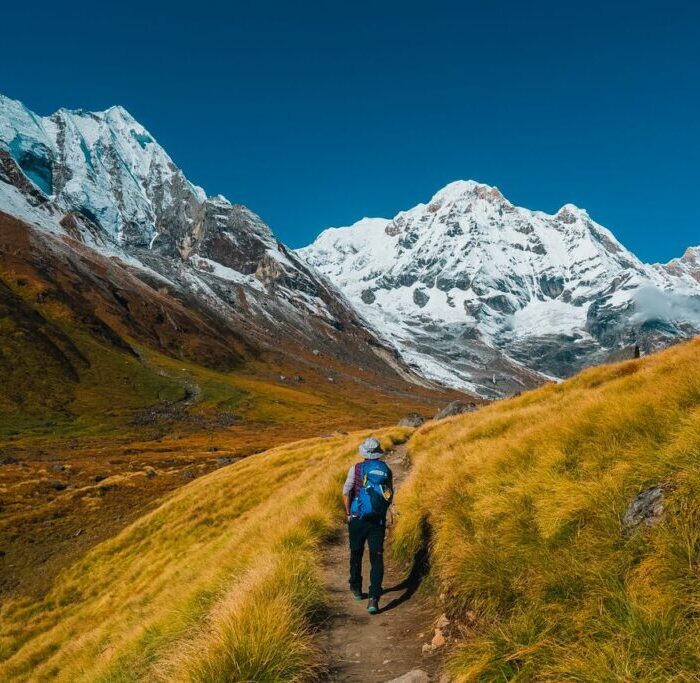Discover the 17-day Manaslu Circuit Trek in Nepal. It is an adventure that reveals the pure beauty of this rarely visited region. Solo people who love to travel alone now prefer this hidden trail for an intimate experience with grand mountains. Feel the great landscapes, snow capped peaks, snow mountains, deep valleys, and lush forests along the trail. As a result, this 17-day Manaslu Circuit trek creates a lively and diverse journey.
Since opening to travelers in 1991, the Manaslu Circuit Trek area was initially found through camping. In recent years, it has become popular as one of the most Nepal’s top trek destinations. With great mountain views, fine landscapes, and also kind Tibetan villages, Manaslu stands out among other trek trails.
Start your 17-day Manaslu Circuit trek on the typical tea house trek, where friendly people will host you in their tea houses along the way. This transition makes the Manaslu Circuit Trek easier to access while saving its pure beauty and its unique culture.
Experience this great journey that captures the best of Nepal’s nature, culture, and warm welcome. The Manaslu Circuit Trek indeed vows an exciting adventure, leaving you with warm memories for a lifetime.
Alliance Treks: Your Trek Experts
Start your Himalayan adventures with Alliance Treks, your local trek experts. Our dedicated team offers a range of trek experiences in the Manaslu region for 2024 / 2025. Tailoring to your choices as well as the length of the trek, our Manaslu circuit trek packages ensure a special journey through the Himalayas. Our local guides vow the success of your treks, even in challenging conditions.
Alternative Treks from Manaslu Circuit
Although the 17-day Manaslu Circuit Trek is a large trail, you can extend your adventure in Nepal. There are also other trek options which you may find interesting and are listed down below:
Major Side Treks to Explore
1. Ganga Jamuna Waterfall: A calm escape, showing the beauty of nature.
2. Barpak Village: Witness the spirit of the people after the 2015 earthquake in Nepal.
3. Tsum Valley: A vital part of the 17-day Manaslu Circuit trek. It features unique cultural and natural attractions.
Best Time to Trek
The best times for the Manaslu Circuit 17-day trek in Nepal are during the fall and spring seasons. From September to October, you can enjoy fine weather, green fields, and great views. From March to May, spring provides warm temperatures, which is perfect to trek, hiking, and climbing. You can also see the bloom of wild flowers, including rhododendrons. Thus, creating a vivid landscape.
Getting Ready
Prepare for the Manaslu Circuit Trek by checking your fitness level, getting the right gear, and also clear planning. Get additional information and assistance from Alliance Treks before you start on your journey into the Himalayas.
On the other hand, please check our trek equipment list. This list will certainly be a guide for you if you plan to trek in Nepal. Similarly, you can check our AMC (Acute Mountain Sickness) which can be a good guide for you to learn more about getting ill at high heights in Nepal. Also, if you want to do a Peak climb in Nepal then please check the climbing equipment list that is a must while going on the Peak climb. Likewise, we suggest you check the updated TIMS card rule as there have been some new changes in Nepal.
Booking is Open for 2024 / 2025
Are you planning to do a trek or tour in 2024? If so, then in our Best Deals part, you can find the ideal information on the best price for the trek cost. Furthermore, book plans as soon as possible.
Contact us or Send a message or call us at
WhatsApp / Viber / Mobile: + 977 – 9851 022814, + 977 – 9841 451681
We are available 24/7
For further information, Contact us.
Itinerary
Day 1: Welcome to Kathmandu International Airport
When you arrive at Tribhuvan International Airport, our representatives will pick you up with your name on board and take you to a Three-star hotel. You can relax there for a while and explore the nearby city on your own. You can buy the essentials for your trek. In the evening, you will receive a briefing about your trekking tour. You spend the night in a Three-star hotel.
Overnight at 3* Hotel in Kathmandu
Meals included: None
Day 2: Excursion to Kathmandu and preparation for the trek
Today, after breakfast, you begin a guided sightseeing tour of some of the most historical and spiritual places in Kathmandu on a private vehicle, such as the historic Durbar Square, the sacred Hindu temple Pashupatinath, the famous “Monkey Temple” of Swayambhunath Stupa and the Buddhist sanctuary (Boudhanath), one of the largest stupas in the world declared a World Heritage Site by UNESCO.
Overnight at 3* Hotel in Kathmandu
Meals included: Breakfast
Day 3: Drive from Kathmandu to Sotikhola: Duration 9 hours by Public Bus & Local Jeep
After breakfast early in the morning transfer to Kathmandu bus station to board the public bus to Arughat. From Arughat we will change to Local Jeep on a sharing basis to drive to Soti Khola. It is almost 9 hours of the scenic drive. You can enjoy the fascinating landscapes, a panorama view of the Himalayas, and a beautiful village along the way. You will drive the paved road from Kathmandu to Dhading Besi and then drive towards Arughat to cross the remote areas of the region. The journey from Dhading Besi to Arughat will be a steep road. By Local Jeep, you will reach Soti Khola. You spend the night in a tea house at Soti Khola.
Overnight at the Local Lodge at Soti Khola
Meals included: Breakfast, Lunch, and Dinner
Day 4: Trek from Soti Khola to Maccha Khola: walking distance 6-7 hours
Your trekking trip starts in Soti Khola when you go towards Machha Khola. We cross a bridge and follow the forest-covered path. Then we will climb the ridge over the Budhi Gandaki River. After a while, you will arrive in Khursane. If you continue to climb the rocky path and then descend, you will reach a village called Gurung Labubesi, which crosses the rice fields. You passed waterfalls on the way. Climb higher and walk along the Budi Gandaki river bed, cross the suspension bridge, and climb another ridge to reach Machha Khola finally. You spend the night in a standard tea house.
Overnight at the Local Lodge at Maccha Khola
Meals included: Breakfast, Lunch, and Dinner
Day 5: Trek from Maccha Khola to Jagat: walking distance 6 to 7 hours
The narrow path makes some small ups and downs and finally crosses the Tharo Khola and reaches Khorlabesi. After a few hour’s walk, you will contact Tatopani, where you can immerse yourself in the hot springs and enjoy it. From the hot springs, walk to Dohan and walk the steep ridge above Budhi Gandaki to get there. After a while, you descend through an entrance gate to reach a valley and finally the village of Jagat. The town is the entrance to the Manaslu Conservation Area. You can stroll through the village for the rest of the day and spend the night in a tea house.
Overnight at Local Lodge at Jagat
Meals included: Breakfast, Lunch, and Dinner
Day 6: Trek from Jagat to Deng: Walking distance 6-7 hours
Today we start our hike with an ascent on a crest to Salleri and then descend to Sirdibas. The valley widens a bit as the path continues to Ghatta Khola. We continue upstream to a long suspension bridge in Philim, a large village of Gurung. The trail turns north just above the village’s lowest house and stays on a reasonably smooth path as it crosses the millet fields towards Ekle Bhatti. The route now leads into a steep, uninhabited gorge. At this point you walk down on the grassy slopes, cross the Gandaki Buddhi River, then walk along the west bank for a while, then cross this east bank and then return. As we continue on the path, the valley widens, and we drive through the bamboo forests to Deng Khola. We reached the small town of Deng via the Khola. You can stroll through the city and explore people’s lifestyles for the rest of the day. Spend the night in a standard lodge.
Overnight at Local Lodge at Deng
Meals included: Breakfast, Lunch, and Dinner
Day 7: Trek from Deng to Namrung: walking distance 6 to 7 hours
Today’s trekking tour begins when you go from Deng to Namrung. First, you cross the Budhi Gandaki River and climb to the village of Rana at an altitude of 1910 m. After crossing the town, you will see the prayer flags and Mani walls that represent the religion of Tibetan Buddhism practiced in this area. You have to go up and down a few ridges to reach the Ghap village. From there, you pass Kani and the fir and rhododendron forests to reach the community of Namrung. The rest of the day is spent exploring the city and surrounding areas.
Overnight at Local Lodge at Namrung
Meals included: Breakfast, Lunch, and Dinner
Day 8: Trek Samagaon
From Namrung, we start the trek early morning and head to Samagaon. Our path passes through a forest and reaches Shyala village. The Shyala village sits surrounded by agricultural fields and has several wooden resting places. As we move ahead, we will be crossing a small stream that drains the Punggen glacier and reach a flat village called Samagaon. Samagaon is the closest village to Manaslu Base Camp.
Overnight at Local Lodge at Samagaon
Meals included: Breakfast, Lunch, and Dinner
Day 9: Acclimatization day in Samagaon: 6-7 hours of exploration
At an altitude of more than 3000 m, our body can show signs of altitude sickness. You need time to deal with increasing height and falling air pressure and temperature. So today, you spend the day in Samagaon to rest and acclimatize and to get to know the rich Sherpa culture. You can take a short walk to Lake Birendra; you can also explore the city and explore its culture and way of life. You will spend the night in Samagaon.
Overnight at Local Lodge at Samagaon
Meals included: Breakfast, Lunch, and Dinner
Day 10: Trek from Samagaon to Samdo: Walking distance 4-5 hours
In the early morning, Spectacular Mount Manaslu will greet looming over you. You will have breakfast and walk to Samdo on the relatively easy route. Today we start our hike on the Budhi Gandaki River, which has turned north, and follow it to a bridge over a side stream. The path on the left leads to the base camp Manaslu. The Larkya la Trail goes through various walls as the valley begins to expand. It’s an easy path on a platform across the river that runs through the juniper and birch forests of Kermo Kharka. You can see a huge white Kani from a stone arch. Finally, through the Kani, we find Samdo. You will spend the night at a guest house in Samdo.
Overnight at Local Lodge at Samdo
Meals included: Breakfast, Lunch, and Dinner
Day 11: Trek from Samdo to Dharamsala / Larkya B.C.: Walking distance 4 to 5 hours
Today we continue our walk along the edge, cross the wooden bridge over Budi Gandaki, and go up. We cross two streams and see the Larkya glacier. We circle the Salka Khola valley and climb back to the stone guest house, which is not a hut but a kind of refuge called Dharamsala, also known as Larke Phedi. Today’s short hike also leaves plenty of time to acclimatize and relax in the afternoon. You will spend the night at a guest house in Dharamsala.
Overnight at Local Lodge in Dharamsala
Meals included: Breakfast, Lunch, and Dinner
Day 12: Trek Dharmashala to Bhimthang via the Larkya La Pass: 8-9 hours
Today is the hardest day of your trek on the Manaslu Circuit as you cross a mountain pass called the Larkya La Pass. Then start your walk early after you get up and have breakfast. The way to the Larkya La Pass is a steep hill, which takes about 2 hours to cross. From the top of this pass, which is also the highest place during the entire hike, you can enjoy exceptional views of mountains like Annapurna II, Manaslu, and many more. After crossing the pass and past the moraine, the path returns to normal, and you will walk to Bhimthang for several hours. After your arrival, you can finally rest after a hard day in a tea house.
Overnight at Local Lodge at Bhimthang
Meals included: Breakfast, Lunch, and Dinner
Day 13: Trek from Bhimthang to Tilije: Walking Distance 5-6 hours
From a ridge in Bhimthang, you will have a magnificent view of Mount Manaslu, the Lamjung Himalayas, the Himlung Himalayas, and the Cheo Himalayas. We continue to descend and cross high grass (Sangure Kharka), followed by a bridge over Dudh Khola. You cross the rhododendron forest and follow a way through a narrow valley until you reach the highest cultivated land in the valley near Karche at 2785 meters. We walk through the fields before doing a steep climb to a ridge. The path leaves the hill in a large arch on the river bank at 2580 m. The town of Gho is not far away. Due to yesterday’s tiredness, we were able to rest one night in Gho, but there are better accommodations in Tilije, so we will stay in Tilije. You will spend the night in the Tilije.
Overnight at Local Lodge at Tilje
Meals included: Breakfast, Lunch, and Dinner
Day 14: Trek from Tilije to Tal: Walking distance 5-6 hours
We climbed a small crest and enjoyed the cobbled path that leads through a beautiful city. You then crossed the bridge over Dudh Khola jumped through a shortened arch, passed a wall of peanuts, and reached the village of Thonje. In the village, you give a police checkpoint and continue to Dharapani. You entered the section of the Annapurna circuit from Dharapani. Further down you meet the village and after a short walk over a bridge over Marsyangdi Khola. We also found some Mani walls before we reached the town of Tal, which is at the foot of a large waterfall.
Overnight at Local Lodge at Tal
Meals included: Breakfast, Lunch, and Dinner
Day 15: Trek from Tal to Syange: Walking Distance 6-7 hours
We follow the path to the village of Chyamje and cross the Marsyangdi Khola again. The Marsyangdi valley opens up with its terraced fields and villages that hang high on the slopes. The path then leads through rhododendrons and pine forests to Syange. Night stay in Syange.
Overnight at Local Lodge at Syange
Meals included: Breakfast, Lunch, and Dinner
Day 16: Syange to Kathmandu: 8 to 9 hours’ drive by Public Bus
The drive from Syange to Kathmandu via Besi Sahar offers the opportunity to enjoy mountains and mountain landscapes. The journey is often made along the banks of the Marsyangdi and Trishuli rivers. We also drive through some beautiful villages with agricultural terraces on either side of the road. In Kathmandu, our office staff will escort you to our hotel. The day in Kathmandu can be spent in your free time, or you can do last-minute shopping.
Overnight at 3* Hotel in Kathmandu
Meals included: Breakfast and Lunch
Day 17: Drop at Kathmandu International Airport
On the last day of your trip, we will drop you off at Kathmandu International Airport about 3 hours before your scheduled flight (Standard Check-out time at the hotel is 1200 Hrs.).
Meals included: Breakfast
END OF THE SERVICES!
Frequently Asked Questions (FAQ)
Q1. How do I prepare for the Manaslu Circuit trek?
To prepare for the Manaslu Circuit Trek, focus on strength endurance training, elevation training, and aerobic conditioning. Walk with your gear to simulate the trail experience. Engage in high-repetition, low-weight exercises for strength endurance. Include elevation training and aerobic workouts to enhance overall fitness and stamina.
Q2. What are the conditions of Manaslu Circuit?
Optimal trekking months for the Manaslu Circuit are March to May and September to November, with October being particularly favorable. The weather during this period is stable, offering comfortable temperatures without extreme heat or cold, making it ideal for a memorable trekking experience.
Q3. How long does Manaslu Circuit take?
Experience the awe-inspiring Manaslu Circuit trek, a stunning 13-day journey (18 days including travel and days in Kathmandu). This adventure takes you around the world’s eighth-highest mountain, starting in bustling Soti Khola and concluding in Syange, traversing diverse and captivating landscapes.
We have designed this trekking for 17 days because the more time you have, you will explore however those who have a short time, simply do 13 days only as suggested above.
Q4. What is Manaslu famous for?
Manaslu, an awe-inspiring eight-thousand-meter peak in the Mansiri Himal section of the Himalayas, is renowned for its majestic structure and breathtaking vistas. Known as the Killer Mountain, it has gained global popularity, becoming one of the most sought-after expeditions worldwide.
Q5. How many distances are there in Manaslu Circuit?
The Manaslu trek can be completed in 13 to 17 days, with most companies offering 14 or 15-day itineraries for proper acclimatization and comfort. The total distance covers 177 kilometers (110 miles), but this may vary depending on the chosen itinerary.
Q6. Is Manaslu Circuit Safe?
Safety on the Manaslu Circuit trek relies on having the right gear. This complex and remote journey demands appropriate equipment for trekkers’ safety, especially at high altitudes. Being well-prepared with the necessary gear and tools is essential for a successful and secure trekking experience.
Q7. What is the accommodation like in Manaslu Circuit Trekking?
Accommodation on the Manaslu trek is generally simple, with some places offering average private rooms with attached bathrooms. However, private bathrooms are not guaranteed, and shared bathrooms are common. In certain instances, dormitory rooms may be necessary, with around 4-5 nights spent in such accommodations along the way.
Q8. How are my trekking crew members on the Manaslu Circuit Trekking?
We offer highly professional trekking guides, licensed and proficient in English. Our porters are strong, capable of carrying 12kg if you are alone, or 20kg if you share with another person. Our experienced porters have done this trek several times. Rest assured, both guides and porters are well-equipped and insured by our company.
Q9. Will I get first Aid from Alliance Treks for this trekking?
Alliance Treks will provide extensive First Aid for this trekking. Primary treatment medicine prescribed by a professional medical doctor will be used. Water purifying tablets or liquid, as well as general treatment like against high altitude, headache, vomiting, Nosie, diarrheas, fever, throat pain, eye drops, etc., will be provided.
Q10. Is there an ATM along the way?
ATMs are available only in Arughat (the trek starting point) and Besishahar (the trek ending point). Along the way, currency exchange to Nepali rupees is limited, so it’s advisable to exchange money in Kathmandu before embarking on the trek.
Q11. Do we need a permit and how many people have to be on the trekking group?
Yes, you need a trekking permit for the Manaslu region (USD 75 per person per week and USD 10 for each additional day/s) as well as the Manaslu Conservation Area Project (MCAP), Annapurna Conservation Area Projects (ACAP) as well as Trekkers’ Information Management System (TIMS). We will manage it for you.
Kindly note that you must be two people for this trekking. One person is not allowed to do or not get the permit from the Department of Immigration Office (DoI) but Alliance Treks can help you have all these permits.
Q12. What amount of Nepali rupees should I carry for my extra expenses?
To cover your lunch, dinner, and extra drinks, it is recommended to take Rs. 3500 per person per day. This amount is equivalent to approximately USD 27 based on the exchange rate as of 20th July 2023. However, please note that exchange rates may vary, so it’s essential to manage your expenses accordingly with the most up-to-date rates during your trip.
Q13. Do we have to go to the Immigration office to get a permit for Manaslu trekking?
Alliance Treks, the permit arrangements will be taken care of. To obtain the permits, you’ll need to provide at least 5 passport-size black and white or color photos, along with your original passport. The documentation process will require a minimum of 1 full day to complete the permit arrangements successfully. Rest assured, we will handle all the necessary paperwork and make the permit process as smooth as possible for you.
Q14. How are road conditions in Tsum and Manaslu trekking?
The road condition from Kathmandu to Arughat is relatively good, but beyond that, it becomes rough and challenging. Traveling in local minibusses or jeeps can be uncomfortable due to limited leg space and sharing with others. If you want a more convenient ride, you’ll need to reserve a private vehicle.
The road can get muddy, and slippery, and at times, rock falls can be a concern. While it may seem challenging, your experienced guide will lead the way, and as many others do, following their lead and being cautious will ensure a safe journey.
Q15. Will I get electricity and Wi-Fi in Tsum Valley Manaslu trekking?
Yes, along the Tsum and Manaslu treks, you will find electricity and Wi-Fi at most places, but the service may be quite weak due to the remote nature of the region. In bad weather, your phone network may not function, but the locals have local phones for emergency communication, though they might not work during severe weather conditions.
Having a battery backup power (Power bank) is highly recommended. While not mandatory, it is a prudent addition to ensure you stay connected during the trek. If possible, carrying a satellite phone can be extremely useful for emergency purposes.

